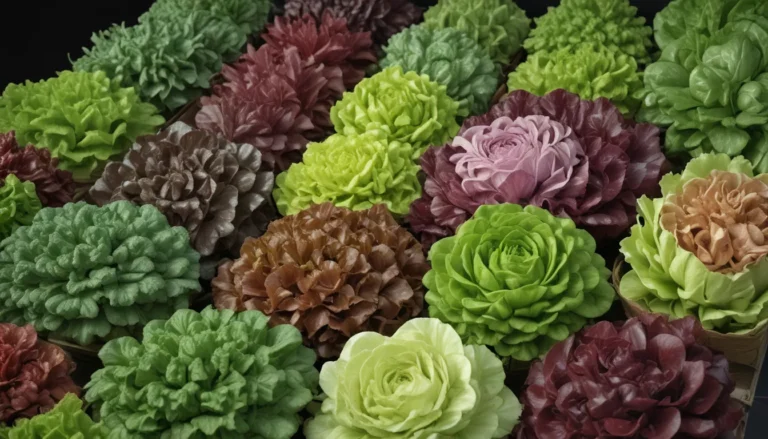Comprehensive Guide to Identifying and Managing Common Japanese Maple Diseases

The Japanese maple is a striking specimen tree that adds beauty to any landscape. However, when these trees fall victim to diseases, it can be devastating. Just like a tragic Shakespearean story, a sick Japanese maple can meet an untimely demise if not properly cared for. Understanding how to identify and manage common diseases is essential for ensuring the health and longevity of your Japanese maples.
In this comprehensive guide, we will cover the nine most common diseases that affect Japanese maples. From anthracnose to verticillium wilt, we will explore how to recognize the symptoms, manage the diseases, and prevent future occurrences. By arming yourself with the necessary knowledge, you can protect your beloved Japanese maples from falling prey to these ailments.
Nine Common Japanese Maple Diseases
- Anthracnose
- Canker
- Leaf Scorch
- Phyllosticta Leaf Spot
- Phytophthora Root Rot
- Powdery Mildew
- Pseudomonas Tip Blight
- Tar Spot
- Verticillium Wilt
If you are interested in learning more about the care and cultivation of Japanese maples, be sure to explore our in-depth guide.
1. Anthracnose
Anthracnose is a group of fungal diseases that cause darkened foliar lesions on plants, including Japanese maples. Fungal pathogens such as Aureobasidium apocryptum and Colletotrichum gleosporoides can lead to anthracnose in these trees. The disease overwinters in dead plant material, releasing spores in spring that spread through wind and rainwater.
Symptoms of anthracnose on Japanese maple foliage include tan or black blotches along leaf margins and veins, which can eventually lead to leaf necrosis and premature defoliation. Proper sanitation practices, such as removing infected branches and leaves, can help prevent the spread of the disease. Additionally, preventative fungicide sprays in early spring can protect at-risk trees.
2. Canker
Cankers are caused by fungal or bacterial pathogens infecting open wounds on trees. On Japanese maples, cankers appear as sunken, irregularly shaped areas on the bark that ooze sap and emit an unpleasant odor. In severe cases, cankers can spread to the vascular system, causing wilt and branch dieback.
Preventing cankers involves avoiding unnecessary injuries to the tree and maintaining overall tree health. Pruning away infected branches with sterile tools and proper sanitation measures can help manage the disease. For severe cases, consulting an arborist or plant pathologist is recommended.
3. Leaf Scorch
Leaf scorch is an abiotic condition caused by environmental factors like high temperatures and dry winds. Symptoms include browning or gray discoloration of leaf margins and areas between veins, leading to premature defoliation. Proper irrigation and mulching practices can help mitigate leaf scorch and preserve tree health.
4. Phyllosticta Leaf Spot
Caused by the fungus Phyllosticta minima, Phyllosticta leaf spot manifests as yellowish to tan spots on infected leaves with dark reddish borders. Proper sanitation and fungicide applications can help manage the disease, especially in young or susceptible Japanese maples.
5. Phytophthora Root Rot
Phytophthora root rot is caused by water molds in the Phytophthora genus, leading to root necrosis and foliar decline. Preventative measures include adequate drainage, proper watering practices, and disease-free planting material. Foliar fungicide sprays can help protect susceptible trees from Phytophthora infections.
6. Powdery Mildew
Powdery mildew is a fungal disease that appears as a grayish-white powder on foliage, causing abnormal growth and discoloration. Raking up fallen leaves and infected plant material, avoiding overhead irrigation, and applying fungicides can help manage powdery mildew infections.
7. Pseudomonas Tip Blight
Pseudomonas tip blight is caused by the bacterium Pseudomonas syringae and can result in shoot discoloration and death. Pruning infected tissues with sterile tools and practicing proper sanitation can help prevent the spread of the disease. Severe infections may require the removal of the affected tree.
8. Tar Spot
Tar spot, caused by various fungi from the Rhytisma genus, appears as dark brown or black spots on infected leaves. Raking up fallen leaves, pruning infected foliage, and applying foliar fungicides can help manage tar spot infections.
9. Verticillium Wilt
Verticillium wilt, caused by Verticillium fungi, can lead to foliar wilt, browning, and premature defoliation in Japanese maples. Pruning infected branches and practicing proper sanitation are essential for managing verticillium wilt. In severe cases, removing and destroying the affected tree may be necessary.
In Conclusion
Caring for Japanese maples requires an understanding of common diseases and their management strategies. By implementing preventative measures, practicing proper sanitation, and monitoring for symptoms, you can protect your Japanese maples from falling victim to these ailments. Remember, a healthy tree is a happy tree! If you have any questions or additional insights to share, feel free to leave a comment below.
To delve deeper into the world of Japanese maples, be sure to explore our comprehensive guides on different varieties, fertilization techniques, and winter care. Gardening is a journey, and we are here to support you every step of the way. Happy gardening!





